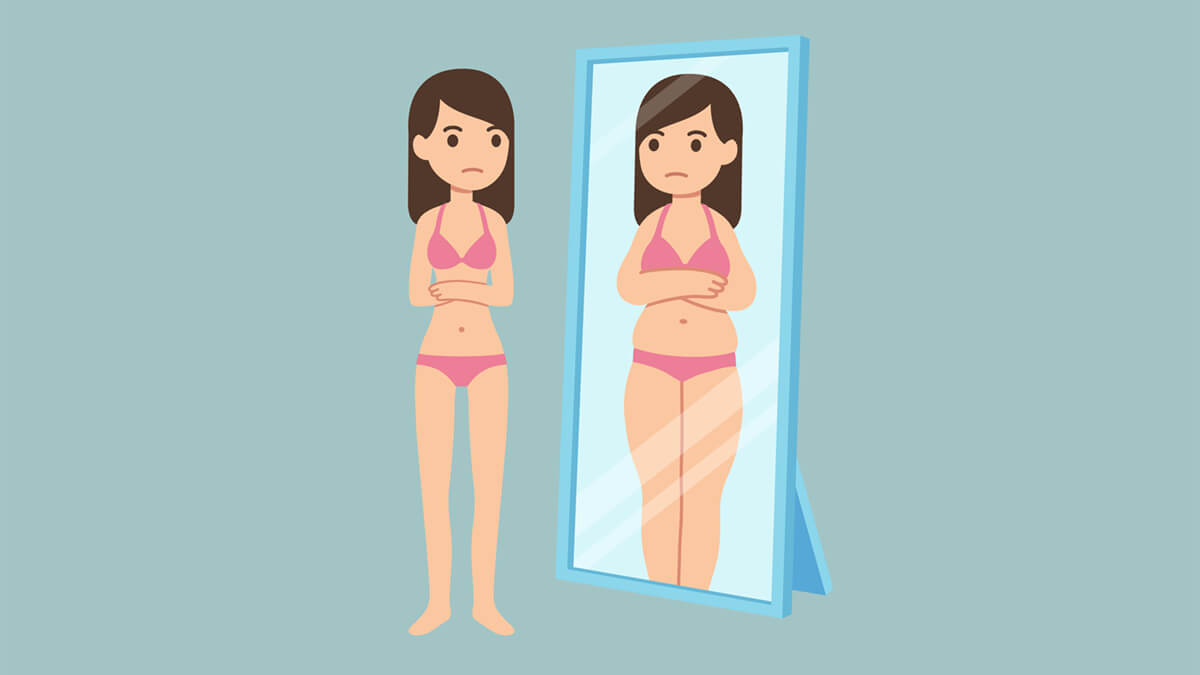Introduction
The rise of mass media, including television, print media, social networking sites, and movies, has brought numerous innovations and discoveries but also significant challenges. Among these is the pervasive portrayal of unattainable beauty standards, notably images of zero-size models, which send the message that success, happiness, and belonging are tied to thin bodies and beautiful features. This constant bombardment leads individuals to scrutinize their own appearance and others, promoting an unhealthy internalization of the thin ideal.
Body Image
Body image is a person’s perception of their own or others’ attractiveness. It involves how one sees themselves compared to societal standards, affecting both mental and emotional health. Negative body image can result in dissatisfaction, body shaming, and an internalization of the thin ideal. Body dissatisfaction arises from a perceived gap between actual and ideal body images, often leading to psychological and physical harm. Body shaming includes mocking someone’s appearance, whether it involves weight, hairiness, or other traits, contributing to widespread dissatisfaction and harmful behaviors.
The thin ideal, emphasizing an ideally slim female body, can lead to severe psychological and physical consequences. Historically, the ideal female body has evolved, from full-figured in ancient civilizations to the stick-thin figures popularized by supermodels in the 1990s and beyond. Despite efforts to promote diverse body types, technology and media pressures still emphasize appearance, influencing self-worth and leading to a significant portion of women feeling dissatisfied with their bodies.
As of 2024, efforts to promote a better body image have included an emphasis on fitness and plus- size models in the fashion and media industries. However, the advancement of technologies and pressures from the media have led to even greater importance being placed on the way we look as an indication of our personal value. Advancements in communication technology have resulted in a “platform of delivery in which we intercept and interpret messages about ourselves, our self- worth, and our bodies.” Social media in particular has reshaped the “perfect body”. Apps and filters retouch images to make people look beautiful, often with inconsistent ideals for hair, body type, and skin tone. According to a study by Dove, only 4% of women thought they were beautiful, while approximately 70% of women and girls in the UK believed the media’s portrayal of impractical beauty standards fueled their appearance anxieties. As a result, the U.S. Department of Health and Human Services reported that, 91% of women were mostly unhappy with their bodies, while 40% will consider cosmetic surgery to fix their flaws.
Four aspects of body image are-
(a) The way we see ourselves (perceptual)
(b) The way we feel about the way we look (affective)
(c) The thoughts and beliefs we feel about our body (cognitive)
(d) The things we do in relation to the way we look (behavioral)
Self-Esteem
Self-esteem is an individual’s evaluation of their own worth. Originating in the 18th century with thinkers like David Hume, it encompasses beliefs about oneself and influences emotional, physical, and spiritual self-care. William James and later psychologists like Morris Rosenberg and Abraham Maslow expanded on this concept, linking self-esteem to personal fulfillment and psychological health.
Self-esteem impacts how individuals value themselves, often rooted in early childhood experiences and influenced by societal standards. Social media has exacerbated self-esteem issues, with platforms promoting unrealistic beauty standards and fostering comparison, leading to lower self-worth and higher body dissatisfaction. Contemporary belief is that self-esteem is routed in early childhood with a foundation of trust, unconditional love and security, impacted on as life progresses by a combination of positive and negative evaluations. Stanley Coopersmith’s (1967 as cited in Seligman, 1996, p.32) self-evaluation scale measured self-esteem in children and then assessed the parent’s child rearing practices for those children with high self-esteem and concluded that the origins of higher self-esteem lay in clear rules and limits enforced by the parents.
A 2016 study found that 79% of 160 female student participants were dissatisfied with how they looked (Pop, 2016). Furthermore, weight and lower self-esteem were associated with an increased dissatisfaction in their physical appearance. The authors of the study suggested that exercise could have the dual benefit of increased weight loss and a positive impact on body image and self- esteem.
According to research, concern regarding body image is a source of mental distress for many women and is strongly associated with self-esteem. The lower the feelings of self-worth, the greater the body dissatisfaction. However, findings suggest that self-compassion can help overcome some of the negative emotions (Stapleton, Crighton, Carter, & Pidgeon, 2017). Indeed, in a 2017 study, participants who attended a self-compassion and self-esteem writing group showed improvements in their body appreciation (Seekis, Bradley, & Duffy, 2017).
Social Media
Technology began to change very rapidly in the 20th Century. After the invention of blogging, social media began to explode in popularity. Sites like MySpace and LinkedIn gained prominence in the early 2000s, and sites like Photobucket and Flickr facilitated online photo sharing. YouTube came out in 2005, creating an entirely new way for people to communicate and share with each other across great distances. By 2006, Facebook and Twitter both became available to users throughout the world. These sites remain some of the most popular social networks on the Internet. Other sites like Tumblr, Spotify, Foursquare and Pinterest began popping up to fill specific social networking niches.
Today, there is a tremendous variety of social networking sites, and many of them can be linked to allow cross-posting. This creates an environment where users can reach the maximum number of people without sacrificing the intimacy of person-to-person communication.
Social media platforms facilitate the creation and sharing of information and personal expression but can have detrimental long-term effects. They offer opportunities for connection and creativity but also pose risks such as depression, anxiety, loneliness, and self-harm due to constant comparisons and fear of missing out (FOMO). Cyberbullying and excessive screen time further contribute to mental health issues.
Theories Explaining Social Media’s Impact on Body Image:
1. Social Comparison Theory: This theory posits that individuals evaluate themselves by comparing to others, often leading to negative self-perception when compared to idealized images.
2. Objectification Theory: Suggests that women internalize an observer’s perspective of their bodies, leading to constant monitoring and dissatisfaction, prompting efforts to alter their appearance through various means.
3. Cultivation Analysis: States that heavy media exposure leads individuals to develop perceptions of reality based on repetitive media messages, causing unrealistic body standards to be seen as normal.
Addressing Body Image Issues
To combat negative body image and self-esteem issues, research suggests focusing on self- compassion, health over appearance, and reducing social media use. Strategies include surrounding oneself with positive influences, challenging negative thoughts, setting realistic goals, seeking professional help, and engaging in enjoyable activities. These approaches aim to foster a healthier self-perception and reduce the distress caused by unrealistic beauty standards.
Conclusion
The influence of mass media on body image and self-esteem is profound, with pervasive beauty standards causing widespread dissatisfaction and psychological harm. Understanding the impact of media and adopting strategies to promote a positive body image and self-esteem can help mitigate these effects and improve mental health and well-being.
(The author of the above article is Ms. Vatsala Sharma. She has done her Masters in Applied Psychology from Gautam Buddha University, Greater Noida, and is certified in Trauma Informed Therapy. She is currently working as a counselor in CHRIST (Deemed to be University), Delhi NCR Campus and is also a PhD. Scholar.)



good
Article is really for those youngsters , who are blinding following and living their life as per social media.
Nicely written
very informative